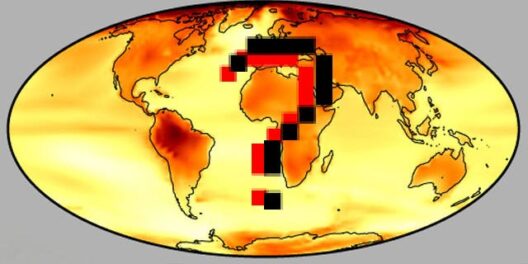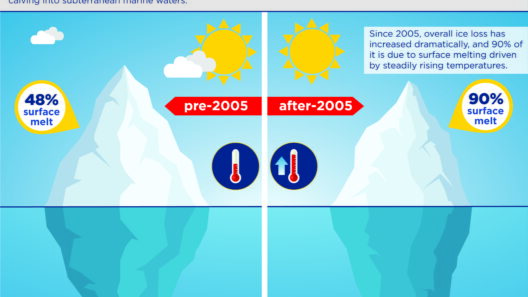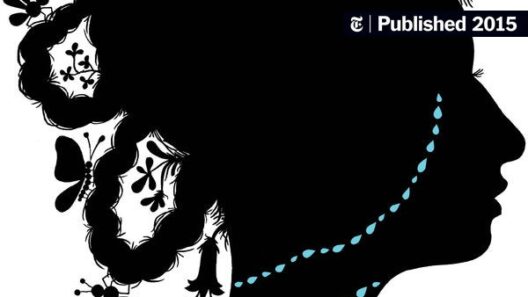The narrative of our planet’s climatic tribulations unfolds like a gripping saga—an intricate tapestry woven with threads of carbon emissions and environmental consequences. This tale, aptly termed “The Carbon Story,” illustrates humanity’s relentless journey toward modernity, replete with innovation and development, yet shadowed by an insidious increase in global temperatures. This paradox of progress stands as both a testament to human ingenuity and a cautionary fable of unchecked consumption.
Imagine our atmosphere as a delicate greenhouse, where the warmth from the sun nurtures life within. It is a cyclical dance of gases—carbon dioxide, methane, nitrous oxide—that keeps the Earth cozy enough to sustain diverse ecosystems. Yet, this gentle embrace has morphed into a suffocating hug, as anthropogenic activities—industrialization, deforestation, and unconstrained fossil fuel consumption—have inundated the atmosphere with excess carbon. The result? A feverish rise in global temperatures, manifesting in extreme weather patterns, rising sea levels, and a cacophony of ecological distress signals.
At the crux of this narrative is the concept of the carbon footprint. Each sector of human activity, from transportation to agriculture, leaves an indelible mark akin to footprints on a sandy shoreline, but these tracks lead toward imbalance and instability. The metaphorical footprints take various forms: the puffs of exhaust from a vehicle, the smoky emissions from coal-powered plants, or the methane released by livestock. As industries churn tirelessly, these footprints accumulate, and nature becomes overwhelmed, struggling to maintain equilibrium.
Among the most troubling aspects of this phenomenon is the feedback loop inherent in climate change. The earth, acting as both a refuge and a victim, grapples with threshold effects that propel it into increasingly perilous territory. For instance, warming temperatures accelerate the melting of polar ice sheets, releasing previously trapped methane—an even more potent greenhouse gas. Each degree of warming exacerbates this cycle, creating a ferocious spiral that spirals our atmosphere toward a tipping point.
Moreover, the narrative unfolds at a human level, where communities face disproportionate impacts. Marginalized populations, particularly in developing nations, are often the most vulnerable to climate change’s capricious nature. As agricultural yields plummet and natural disasters become commonplace, the question of equity arises. Who shoulders the burden of this crisis? The concept of climate justice emerges, insisting that those who contribute least to carbon emissions often bear the heaviest consequences. This creates a moral imperative that challenges us to reevaluate our consumption habits and governance structures.
Now, interwoven with disheartening statistics and projections lies a glimmer of hope. Initiatives to mitigate carbon emissions are gaining traction, echoing a collective resolve to rewrite the script. Renewable energy solutions—solar, wind, and hydroelectric power—present viable paths toward sustainability, fostering an era less reliant on fossil fuels. Transitioning toward a circular economy, where resources are reused and repurposed, could redefine consumption patterns, enabling society to tread lightly upon the Earth.
The emergence of carbon markets introduces another facet to our carbon narrative. These markets, allowing for the trading of emission allowances, establish a monetary value on carbon emissions. They serve as incentives for industries to innovate and reduce their carbon output. As companies pursue greener alternatives, the notion of capitalists becoming stewards of the environment could revolutionize the very foundation on which our economy stands, steering us toward a more sustainable trajectory.
Yet, it is essential to realize that science, policy, and activism must converge to guide these efforts toward success. Policymakers play a critical role in shaping regulations that address emissions through frameworks such as cap-and-trade or carbon taxes. Such measures compel industries to reconsider their environmental impact. As more nations commit to net-zero goals, the world is beginning to recognize that it cannot afford to sidestep the discussions that will shape its collective destiny.
A pivotal component of this transformation is technology, gleaming like a lighthouse in turbulent seas. Innovations such as carbon capture and storage (CCS) offer hopes for curtailing emissions at source. These technologies illustrate how human ingenuity can turn the tide in favor of the environment. As we harness these advancements, we must prioritize accessibility and inclusivity, ensuring that technological benefits are equitably distributed among all segments of society. The challenge will be to ensure that this transition does not mirror the inequities of the past.
Education will also play an indispensable role in the evolution of this narrative. It is imperative to foster environmental literacy, empowering individuals to make informed decisions regarding their energy use and consumption patterns. The urgency of climate change beckons for widespread awareness and engagement, akin to a call to arms. As communities rally around local sustainability movements, their voices amplify the message that collective action is paramount in this fight against climate change.
In conclusion, “The Carbon Story” serves as both a cautionary tale and a source of inspiration. The urgency to reduce carbon emissions and mitigate climate change is palpable. The metaphor of a greenhouse that once sheltered us has become a battleground for the very survival of our planet. Only through collaborative efforts—rooted in innovation, policy, social equity, and education—can we hope to rewrite the final chapters of this ongoing saga. The choice is ours: we can continue down the path of excessive emissions and face dire consequences, or we can unite, reshape our consciousness, and forge a sustainable future. The time for action is now; our planet’s narrative hangs in the balance, and its next chapter is yet to be written.








